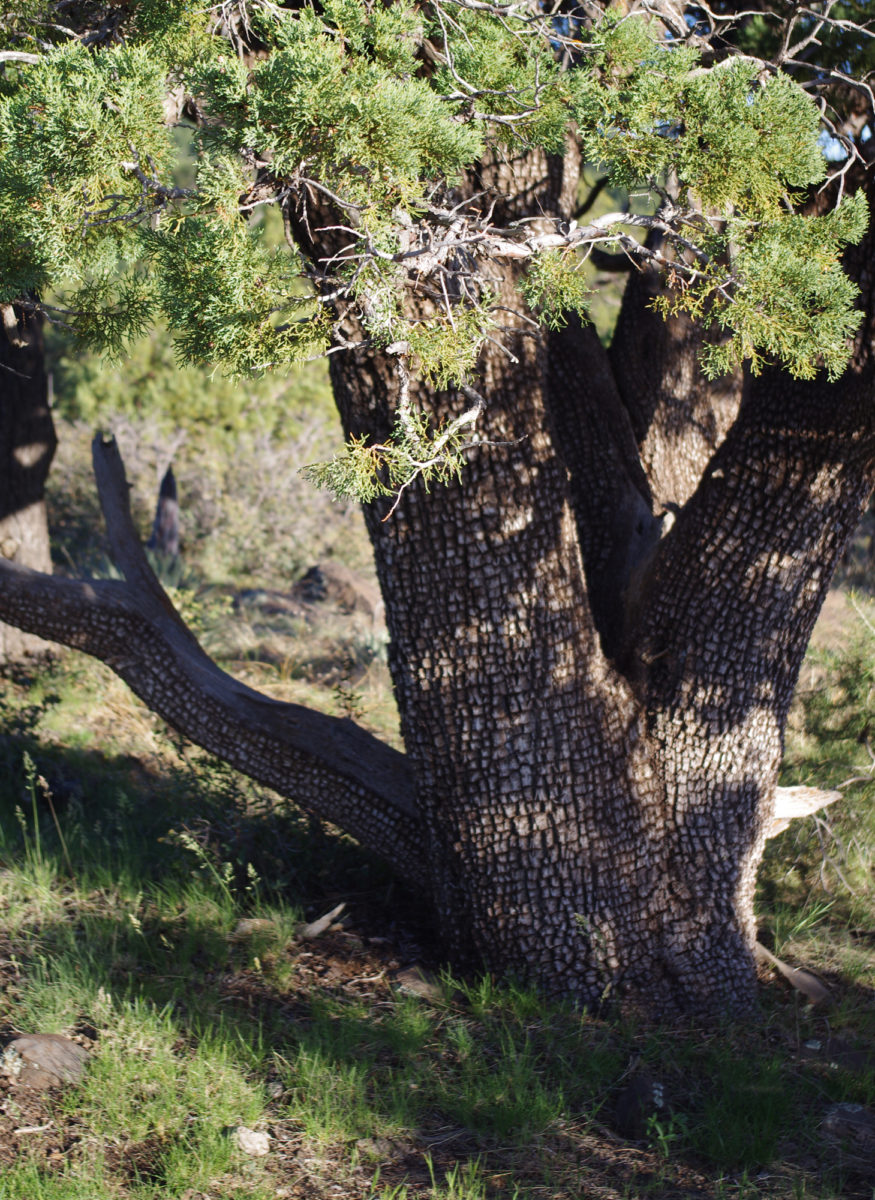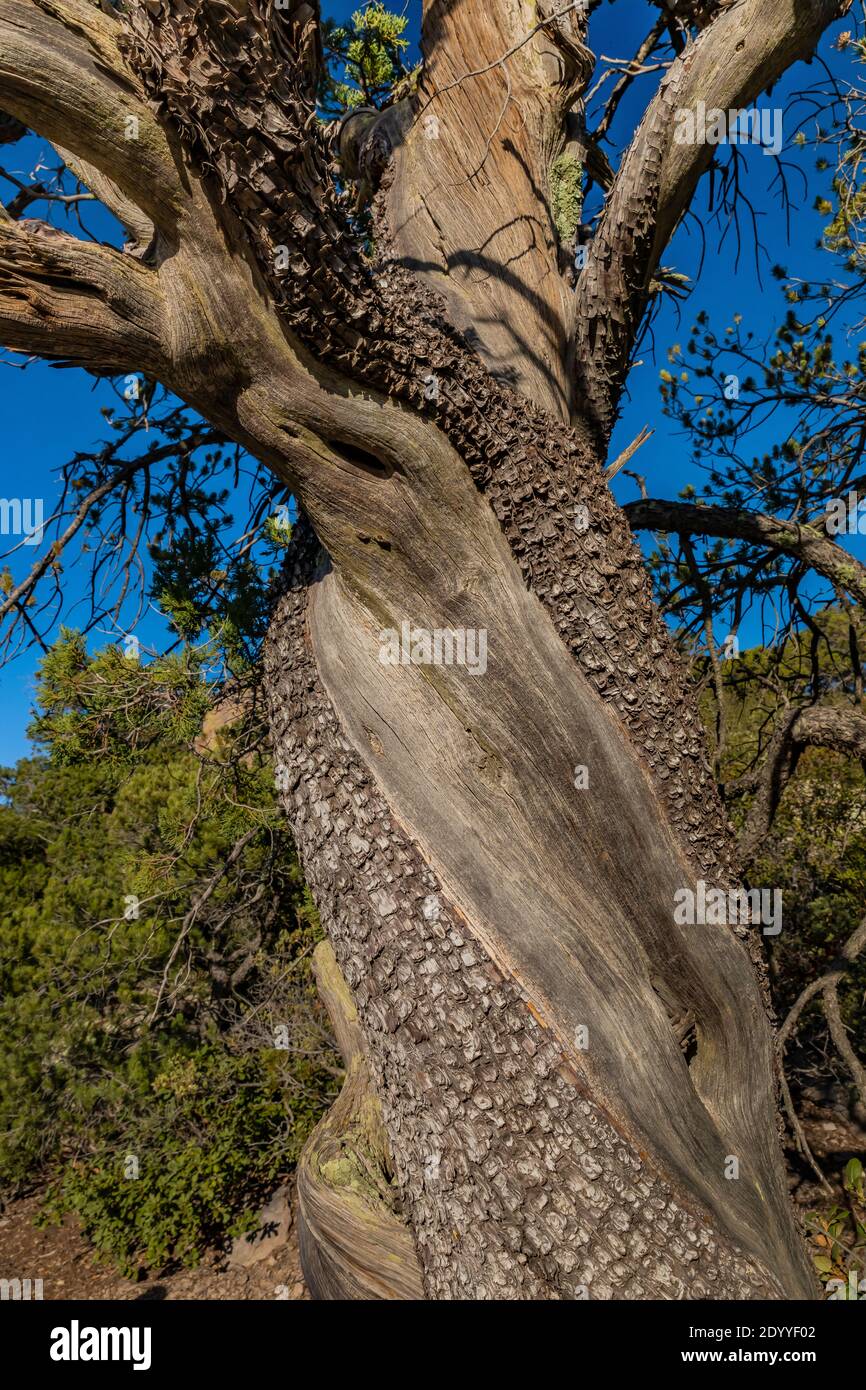

The large edible berries are enjoyed by many different birds, mammals, even be eaten by humans. Alligator Juniper is a tree which attains a height of only 80 to 45 feet, but has a short, thick trunk from two to four feet in diameter.

However, scientists have found that mortality can increase after several consecutive years of drought. Alligator junipers are an essential element for native birds, deer, javelina, and smaller mammals. The trees stop growing when moisture conditions are unfavorable but begin growing again with adequate moisture, a characteristic that enhances the species’ ability to survive in harsh, arid environments. Research has shown that alligator junipers can live up to 500 years. The species also extends into northern and central Mexico. The largest of the southwestern junipers, the alligator juniper is found in western Texas, in parts of northwestern New Mexico and in north-central Arizona near Flagstaff. The park focuses on the protection of alligator junipers before thinning is done.
#Alligator juniper series#
The National Park Service recently cut brush and trimmed trees in the same area of the monument to prepare for a series of prescribed fires to restore fire into the ecosystem, targeting the buildup of vegetation that can lead to large catastrophic fires. Park employees are encouraging the public to submit any information that would help with the investigation to the National Park Service’s tip line. But park law enforcement monitoring the area and over the past year have reported additional trees cut down, with the latest incident happening in October. The initial illegal tree cutting discovery was reported in 2020. The cutting of alligator junipers affects biodiversity within the monument and officials said the area will take many decades to recover. Distribution: Southwestern United States and northern Mexico. Rural New Mexico residents frequently cut wood in the fall to help with winter heating needs, but cutting trees at El Malpais is illegal. Alligator Juniper (Juniperus deppeana) Common Name (s): Alligator Juniper. Lisa Dittman, a spokeswoman for the national monument, said Tuesday that officials don’t know why the trees are being targeted or what they’re being used for. This slow growing evergreen lives beyond 500 years. Found mostly in Arizona, New Mexico, Texas and Northern Mexico, Alligator Junipers grow at elevations of 4000 6000 feet.
#Alligator juniper free#
Officials said the trees that were cut down were likely hundreds of years old. Named after its scaly, reptilian looking bark, Alligator Juniper is perhaps the most free form growth of all the species. A seed can take up to 18 months to mature after pollination and the growth rate for young trees is about 0.6 inches (1.5 centimeters) per decade, slowing as they get older.

Known for their unique furrowed bark, alligator junipers grow very slowly. (AP) - Several dozen ancient alligator juniper trees have been illegally cut down at El Malpais National Monument in western New Mexico and authorities with the National Park Service are trying to find out who’s responsible.


 0 kommentar(er)
0 kommentar(er)
